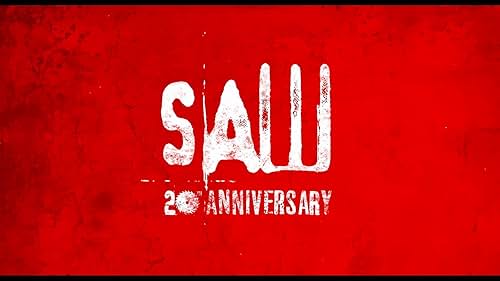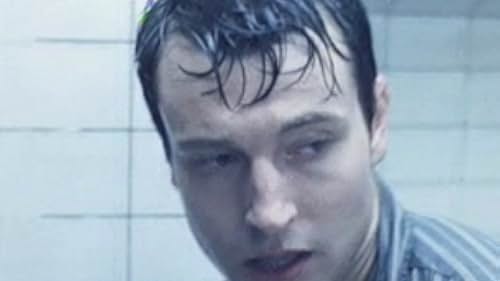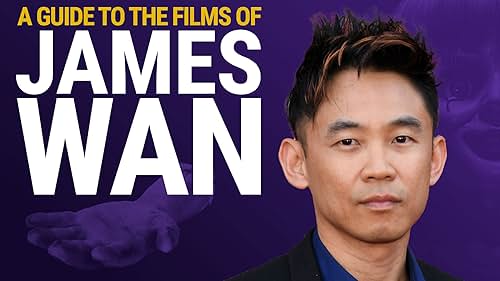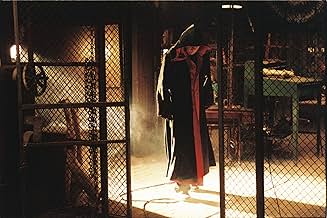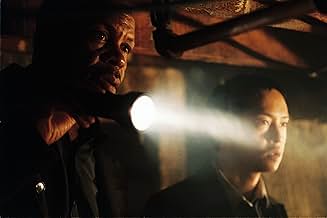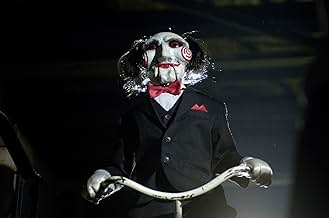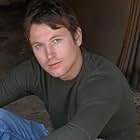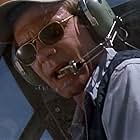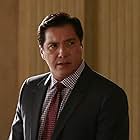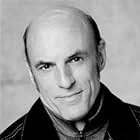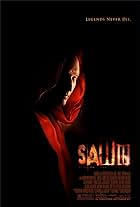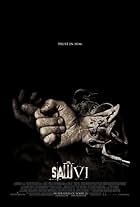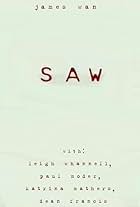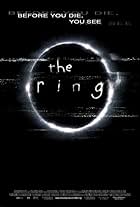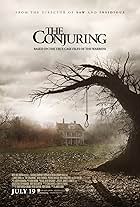Two men awaken to find themselves on the opposite sides of a dead body, each with specific instructions to kill the other or face consequences. These two are the latest victims of the Jigsaw... Read allTwo men awaken to find themselves on the opposite sides of a dead body, each with specific instructions to kill the other or face consequences. These two are the latest victims of the Jigsaw Killer.Two men awaken to find themselves on the opposite sides of a dead body, each with specific instructions to kill the other or face consequences. These two are the latest victims of the Jigsaw Killer.
- Awards
- 9 wins & 10 nominations
Alexandra Bokyun Chun
- Carla
- (as Alexandra Chun)
Oren Koules
- Dead Cellmate
- (uncredited)
Hans Raith
- Detective
- (uncredited)
Storyline
Did you know
- TriviaIn order to make the actors feel what the characters were going through, all of the bathroom scenes were shot in chronological order.
- Goofs(at around 59 mins) After Lawrence and Adam find the box with the cellphone and cigarettes, Lawrence tries to call 911. Three different tones can be heard and he says that the cellphone has been blocked from making calls. However, FCC rules require every telephone that can access the network to be able to dial 911, regardless of any reason that normal service may have been disconnected (including deactivated or blocked phones).
- Crazy creditsThe opening title ripples as if it was underwater.
- Alternate versionsThe song "Bite The Hand That Bleeds" by Fear Factory that originally played over the end credits was replaced on the uncut version of the film by an original piece of music by Charlie Clouser entitled "Zepp Overture".
- ConnectionsEdited into Saw II (2005)
- SoundtracksYou Make Me Feel So Dead
Performed by Pitbull Daycare
Written by Stephen Ladd Bishop, Charles Todd Conally and Don Van Stavern
Published by Dimension Gate Music (BMI)/FEC Music (ASCAP)
Courtesy of Cleopatra Records
Featured review
Not since Se7en's John Doe has there been a serial killer with such a bizarre philosophy behind his actions (not that Jigsaw actually kills anyone; more on that later). Sure, in light of the increasingly deteriorating sequels it's hard to think of Saw as little more than a franchise- starter (something the writer and director never planned), but viewed on its own, astonishing merits, it's a good, nasty thriller, filled with solid scares and (especially compared to the follow-ups) quite well written.
According to the film's notorious back-story, it took only 28 days to shoot it. Not that strange, given most of the action takes place in just two locations: one is a bathroom where Adam (Leigh Whannell) and Dr. Lawrence Gordon (Cary Elwes) fins themselves with their feet chained to the wall, with no recollection whatsoever of how the hell they got there; the other is the lair of the mysterious Jigsaw, a serial killer whom Detectives Sing (Ken Leung) and Trapp (Danny Glover) have been tracking down for weeks.
The two facts are linked in a most ingenious way: Jigsaw doesn't really kill anyone, but "plays a game" with his victims. In the case of Adam and Dr. Gordon, as the tape recorder found in a dead man's hand tells them, each of them has two hours to free himself and kill the other, or they will both die. Problem is, the only way to get rid of the chains is to saw your foot off. And so, while the two unfortunate cell-mates have to choose who gets to live (that's Jigsaw's perverse logic: he offers you a choice), the police close in on the elusive psycho, whose previous deeds and MO are shown in flashbacks.
Whereas the subsequent Saw films use the messy chronology just for the hell of it (though they do get away with some neat narrative tweaks thanks to it), the first installment takes advantage of its non-linear storytelling to increase the suspense and provide some valuable clues to how everything fits together. It is to James Wan and co-writer Whannell's eternal credit that they, like Se7en writer Andrew Kevin Walker, went beyond slasher clichés and came up with something more. Okay, so Saw's philosophical undertones aren't entirely original, but what the heck, they do manage to keep the audience interested in what's going on. In addition, adding a little more depth to the killer ensures that the movie's more gruesome parts (and there are a lot of them) don't come off as gratuitous bloodletting (for an example of the latter, look no further than the countless sequels to A Nightmare on Elm Street or Friday 13th).
Furthermore, the intelligence behind the film's structure might also have had a positive effect on the performances, given the acting is more convincing here than in most post-2000 shockers: Elwes and Whannell's desperation is conveyed with an intensity that's almost too painful to behold, Glover plays the aging cop role resisting the temptation to do a Lethal Weapon in-joke (you know, the "too old for this sh*t" gag) and when Jigsaw himself appears... well, it's the horror equivalent of Keyser Soze - chilling and impossible to forget (and, for once, not played by Kevin Spacey). Just like the movie.
According to the film's notorious back-story, it took only 28 days to shoot it. Not that strange, given most of the action takes place in just two locations: one is a bathroom where Adam (Leigh Whannell) and Dr. Lawrence Gordon (Cary Elwes) fins themselves with their feet chained to the wall, with no recollection whatsoever of how the hell they got there; the other is the lair of the mysterious Jigsaw, a serial killer whom Detectives Sing (Ken Leung) and Trapp (Danny Glover) have been tracking down for weeks.
The two facts are linked in a most ingenious way: Jigsaw doesn't really kill anyone, but "plays a game" with his victims. In the case of Adam and Dr. Gordon, as the tape recorder found in a dead man's hand tells them, each of them has two hours to free himself and kill the other, or they will both die. Problem is, the only way to get rid of the chains is to saw your foot off. And so, while the two unfortunate cell-mates have to choose who gets to live (that's Jigsaw's perverse logic: he offers you a choice), the police close in on the elusive psycho, whose previous deeds and MO are shown in flashbacks.
Whereas the subsequent Saw films use the messy chronology just for the hell of it (though they do get away with some neat narrative tweaks thanks to it), the first installment takes advantage of its non-linear storytelling to increase the suspense and provide some valuable clues to how everything fits together. It is to James Wan and co-writer Whannell's eternal credit that they, like Se7en writer Andrew Kevin Walker, went beyond slasher clichés and came up with something more. Okay, so Saw's philosophical undertones aren't entirely original, but what the heck, they do manage to keep the audience interested in what's going on. In addition, adding a little more depth to the killer ensures that the movie's more gruesome parts (and there are a lot of them) don't come off as gratuitous bloodletting (for an example of the latter, look no further than the countless sequels to A Nightmare on Elm Street or Friday 13th).
Furthermore, the intelligence behind the film's structure might also have had a positive effect on the performances, given the acting is more convincing here than in most post-2000 shockers: Elwes and Whannell's desperation is conveyed with an intensity that's almost too painful to behold, Glover plays the aging cop role resisting the temptation to do a Lethal Weapon in-joke (you know, the "too old for this sh*t" gag) and when Jigsaw himself appears... well, it's the horror equivalent of Keyser Soze - chilling and impossible to forget (and, for once, not played by Kevin Spacey). Just like the movie.
- How long is Saw?Powered by Alexa
Details
- Release date
- Country of origin
- Official site
- Language
- Also known as
- Juego macabro
- Filming locations
- Production company
- See more company credits at IMDbPro
Box office
- Budget
- $1,200,000 (estimated)
- Gross US & Canada
- $56,000,369
- Opening weekend US & Canada
- $18,276,468
- Oct 31, 2004
- Gross worldwide
- $104,004,218
- Runtime1 hour 43 minutes
- Color
- Sound mix
- Aspect ratio
- 1.85 : 1
Contribute to this page
Suggest an edit or add missing content



